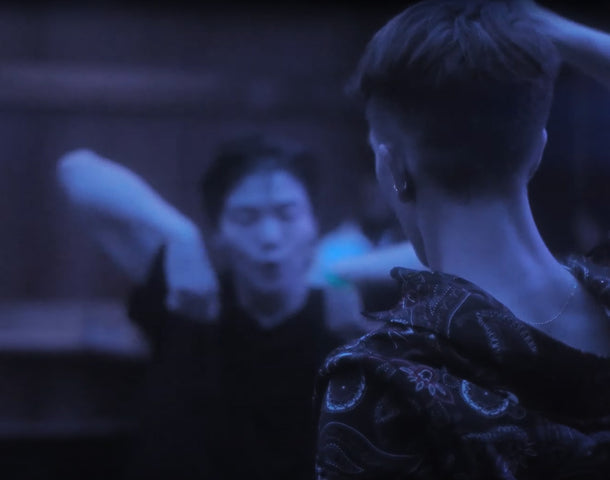
WHAT IS WAACKING? A BRIEF HISTORY OF A QUEER DANCE FORM
Ready to step up to a pleasurable dance style? Because things can get a whole lot better with waacking. And, no, it’s not at all ‘whack’ to do. However, this type of movement does pack a sharp blow.
For starters, check out our video collaboration with It Gets Better Canada that highlights two liberated and queer waacking dancers who found glory and freedom in this body ritual.
As a helpful addition to this piece of content, let’s discuss where the waack dance came from, what a waacker means, and list some notable figures that have celebrated this revolutionary activity.
When doing the waack dance or living your daily life, nothing feels better than liberation and self-expression.
1. Waacking 101
If you’re not familiar with this dance style, let us break it down for you with some bite-sized history.
Waacking essentially means “waving arms” and has been associated with the femininity and artistry that performers of this genre bring to the table (or in this case, the dance floor). On another note, the term may be inspired by terminology used in Batman & Robin cartoons and superhero classics, like Boom! Pow! or Whack! to express an action.
Historically, waacking began as an underground Latino and African-American dance style in New York and Los Angeles gay-disco clubs in the early ‘70s. The dance was heavily inspired by theatrical postures expressed by famous actresses from the ‘40s – particularly by Greta Garbo. It’s also been tied to voguing, as many of the moves are similar in nature.
Queerness had a stigma attached to it so this dance was an opportunity of escape for these queer individuals. And it still is today. Currently, there are competitive waacking competitions and classes available for anyone. Waacking is a movement where people, queer or not, can let go of their daily hardships in a safe, yet bold, way. And, at Durex, we know nothing feels better than being safe.
2. What A Waacking Dancer Does
Performers of this dance genre are often seen combining a variety of quick, geometrical arm movements (think helicopter propeller speeds) with modelesque poses. However, it’s not all hands-on.
Doing a waacking dance also means using fancy footwork inspired by jazz, house dance, and tap to create freestyle dancer individuality and independence on the floor. Waacking dancers may use the form as a helpful tool to release themselves. Moving to the beat of your own body allows you to be your own movement while liberating your mind and entirely letting go.
For a helpful video demonstration on some beginner waacking moves, check out this video.
A waack dance is all about being raw, but don’t be whack in the bedroom. Make sure you’re using protection when it comes to sex!
Unfortunately, as a result of the AIDS epidemic, much of the history of waacking and its originators are lost. Still, there are some notable figures to point out and give flowers to.
3. Important Waacking Dancers You May Already Know
At the heart of this freeing movement, figures like Lamont Peterson, Mickey Lord, and Blinky first showcased this incredible arm-swinging style. Soon followed by other club dancers, particularly male go-go dancers. But after a decline of this style in the ‘90s, a waacking resurgence took place around 2008 where artists such as Lady Gaga, Beyonce, Madonna, and Snoop Dogg used choreographers who embraced it with open arms.
Classical performers of the music involved in this dance art form are notably Donna Summer, Diana Ross, Whitney Houston, and Michael Jackson.
To learn more about how TikTok has welcomed these liberating motions, check out What Is Waacking? And Why Is It All Over TikTok?


